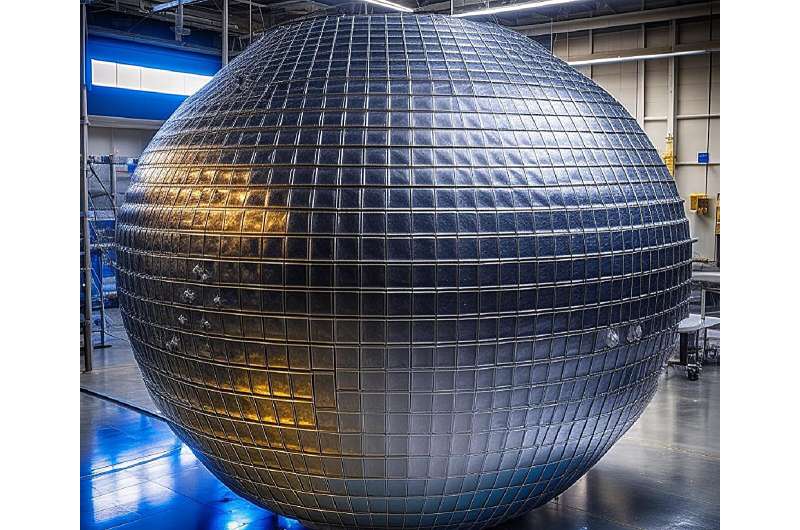This article has been reviewed according to Science X's editorial process and policies. Editors have highlighted the following attributes while ensuring the content's credibility:
fact-checked
peer-reviewed publication
trusted source
proofread
Scientists develop a mathematical model to optimize the design of thermal protection systems for spacecraft

Mechanics from St Petersburg University have developed a mathematical model that takes into account non-equilibrium processes occurring at high velocities in the gas flow and on the surface. This model can be used for detailed modeling of the interaction of gas with the surface of a spacecraft, which is extremely important when designing its thermal protection. The paper is published in the journal Physics of Fluids.
In a non-equilibrium flow of a gas mixture, microscopic processes associated with the interactions of molecules (redistribution of internal energy, chemical reactions, and ionization) occur on the same time scale as changes in hydrodynamic parameters such as velocity, pressure, and temperature. This happens at high gas velocities and temperatures. Scientists around the world are studying these processes.
Even more interesting phenomena occur during the interaction of a non-equilibrium rarefied gas with the surface of a solid body. When the gas is close to the surface, its velocity and temperature can be very different from the indicators in the volume of the gas due to the low density. This is called the "slip effect." It reflects the physical interaction of a gas with a solid surface.
The surface of a body can also act as a catalyst, influencing the energy states of the particles and the ongoing chemical reactions. These influences significantly affect the composition of the mixture and the transfer of heat and mass.
As part of the research, a mathematical model was developed. It takes into account non-equilibrium processes in the gas and on the surface, such as adsorption / desorption, excitation and deactivation of vibrational degrees of freedom, and heterogeneous chemical reactions.
"This made it possible to describe in detail the dynamics and kinetics of a rarefied non-equilibrium gas near the surface of solids. The main feature of the obtained boundary conditions is the ability to correctly interpret the effects of the physical interaction of a gas with the surface of a body and take into account the influence of interfacial heterogeneous chemical reactions," said Elena Kustova, Head of the Department of Hydroaeromechanics at St Petersburg University.
To take these effects into account is extremely important in a number of practical problems. For example, those related to: spacecraft entry into the atmospheres of planets; the study of supersonic flows in the nozzles of ground-based aerodynamic installations and rocket engines; and the analysis of gas flows in microchannels used in microelectronics and vacuum installations.
This model can be used to design thermal protection systems for spacecraft. In particular, reducing the thermal protection layer of the space recovery vehicle opens up prospects for increasing its disposable load.
The model was tested in the case of a gas flow study near a space recovery vehicle with a surface of silicon dioxide in the Earth's atmosphere.
The results showed that the effect of rarefaction is more important for predicting the properties of the flow compared to the effect of chemical reactions on a low active surface. The heat flux at the vehicle wall, calculated using the new model at an altitude of 85 km turned out to be approximately 25% lower than when using standard boundary conditions.
More information: L. Shakurova et al, State-specific slip boundary conditions in non-equilibrium gas flows: Theoretical models and their assessment, Physics of Fluids (2023). DOI: 10.1063/5.0161025
Journal information: Physics of Fluids
Provided by St. Petersburg State University




















